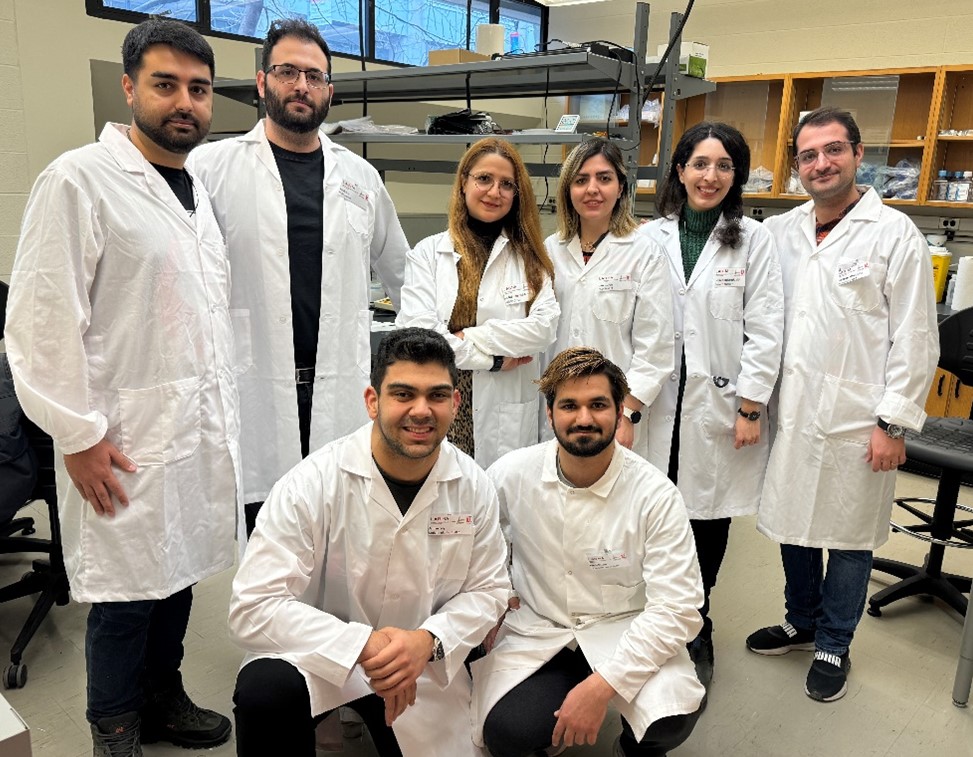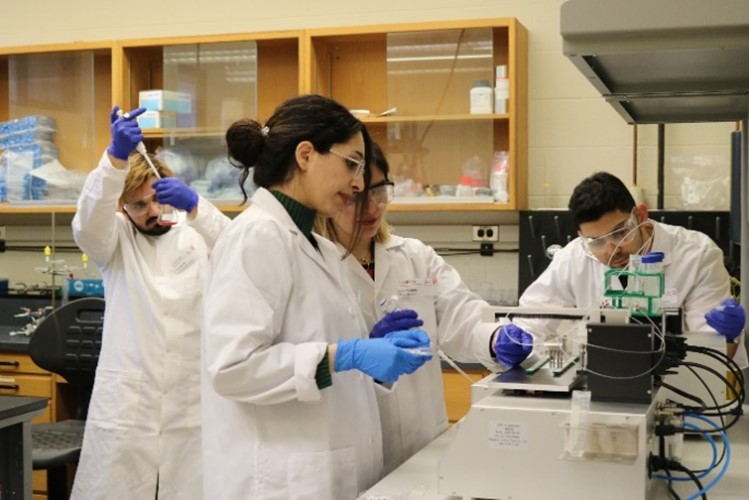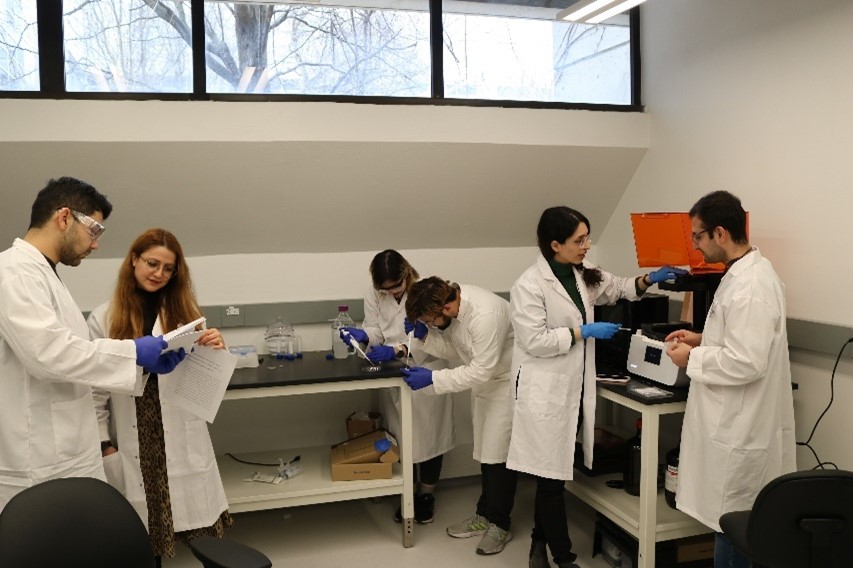The future of disease diagnostics lives at Lassonde
Tags:

The Laboratory of Advanced Biotechnologies for Health Assessment (LAB-HA) is a modern research hub at York University’s Lassonde School of Engineering that focuses on scientific innovation to transform the future of disease diagnostics.
Picture state-of-the-art technologies, busy researchers wearing white lab coats and futuristic AI-powered tools with capabilities beyond imagination.
“LAB-HA’s mission is to develop wearable biomedical devices for early detection of burdensome diseases,” says Razieh (Neda) Salahandish, Director of LAB-HA and assistant professor in the Electrical Engineering & Computer Science department.
Early detection of diseases plays a key role in improving patient outcomes and care. Unfortunately, many diseases are diagnosed through complex and invasive processes requiring expensive equipment and facilities. LAB-HA is committed to changing this reality by creating cost-effective, non-invasive and convenient solutions.

“Our work applies all kinds of scientific methods in a multidisciplinary approach to disease diagnostics,” says Professor Salahandish. “There are many different scientific disciplines required to support our research. We have chemists and computer scientists working alongside electrical, software, computer and mechanical engineers.”
Researchers at LAB-HA include both undergraduate and graduate students who help lead and support complex research projects and activities, enhancing their academic experiences and technical skills.
Many of LAB-HA’s projects are also conducted in collaboration with leaders in the health science industry including the University Health Network and St. Michael’s Hospital, as well as start-up companies, elevating research impact and capabilities.

Discover some of LAB-HA’s ongoing projects
Smart Contact Lenses (SCLs)
Supported by the Lassonde Innovation Fund (LIF), LAB-HA is working with the Mechanical Engineering department to fabricate smart contact lenses (SCLs) capable of analyzing disease-indicating biomarkers. Biomarkers commonly used to detect harmful eye conditions, such as vascular endothelial growth factor (VEGF) and tumour necrosis factor-alpha (TNF-α) are present in human tears and gel-like tissue in the eye known as vitreous fluid.
The SCLs are designed as wearable devices which can non-invasively collect patient’s tears and examine the presence of biomarkers, to support the early detection of various eye diseases and improve patient outcomes. The team is also working on connecting the miniaturized on-site data acquisition unit (IC chip), near-field communication (NFC) chip and antenna, allowing results to be wirelessly transferred to a smartphone.
Smart Goggles
In a project under review by the Alzheimer’s Society of Canada, LAB-HA is developing smart goggles that can help diagnose and monitor the progression of Alzheimer’s Disease. This project specifically involves undergraduate students, providing a unique opportunity for junior researchers to become a part of cutting-edge work at Lassonde.
Though there is currently no gold standard technique for clinical and non-invasive detection and monitoring of Alzheimer’s Disease, electrical activity in the brain, which can be measured using an electroencephalogram test (EEG), has been associated with the presence of Alzheimer’s Disease. Less explored indicators of the disease include various representations of eye and iris movements which can be examined using eye movement tracker cameras.
The clinical relevance of these eye movements, EEG signals and iris responses in Alzheimer’s Disease will be determined in a first-of-its-kind, biomarker discovery initiative establishing a correlation between Alzheimer’s Disease and these features.
LAB-HA will use this knowledge to develop smart goggles with embedded cameras for eye tracking and iris response measurements as well as extended electrodes for scalp EEG acquisition. Results will be analyzed using machine learning methods and retrieved on a portable device like a mobile phone.

Wearable Devices
Another research initiative at LAB-HA, currently in its early stages, focuses on the development of wearable devices that detect inflammatory biomarkers associated with cancers and chronic inflammatory conditions. This novel work, funded by the Natural Sciences and Engineering Research Council of Canada (NSERC) Discovery Grant (DG), has the potential to expedite chronic inflammation diagnoses, which are the root cause of many diseases. These research efforts can also help reduce the need for time-consuming investigational procedures.
These projects are just a few examples of LAB-HA’s groundbreaking research aimed at transforming the future of disease diagnostics. LAB-HA’s mission also aligns with the United Nations’ Sustainable Development Goal 3: Good Health and Well-being, helping address the world’s most pressing challenges.
Learn more about LAB-HA on the lab website.